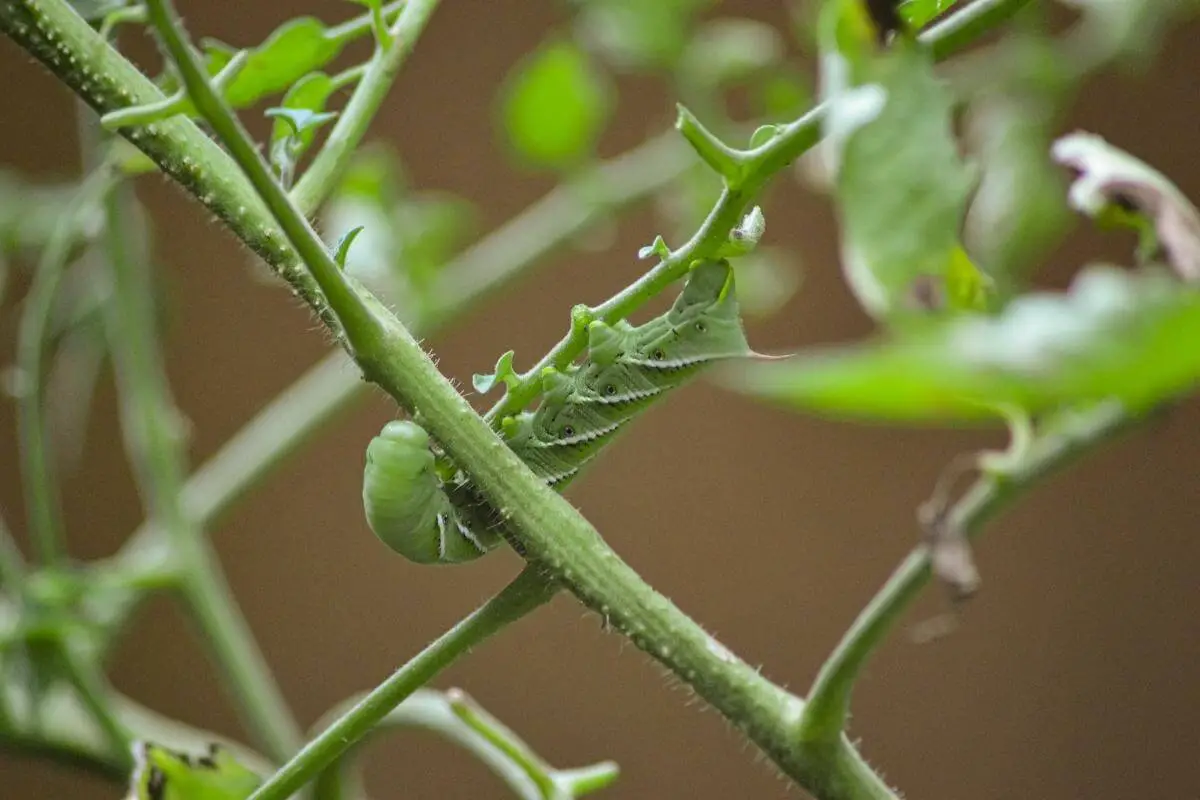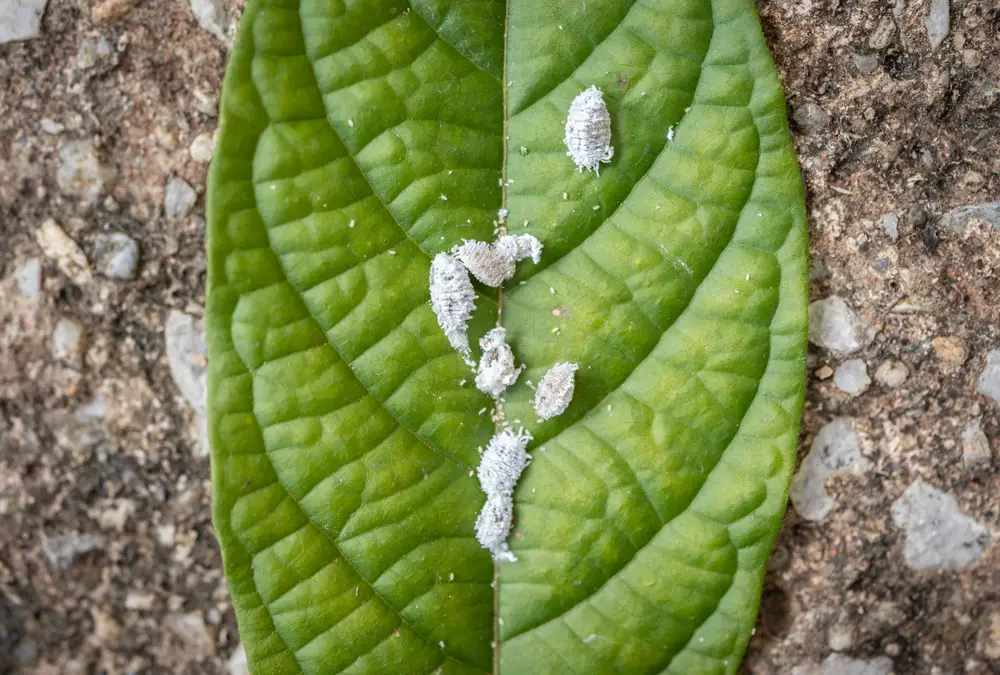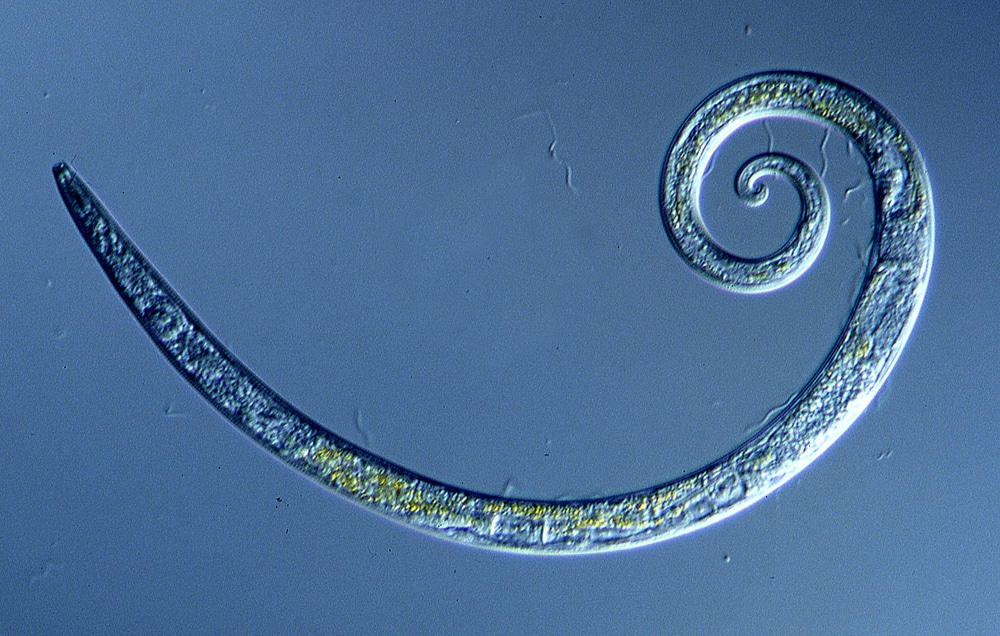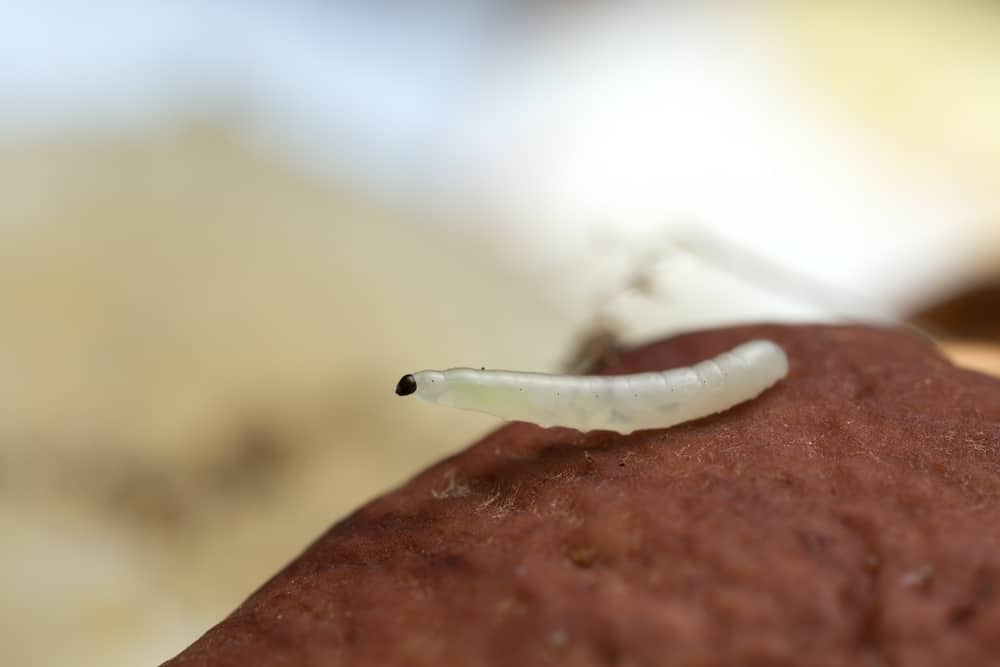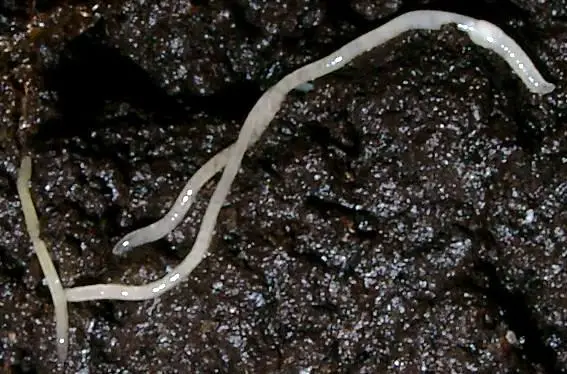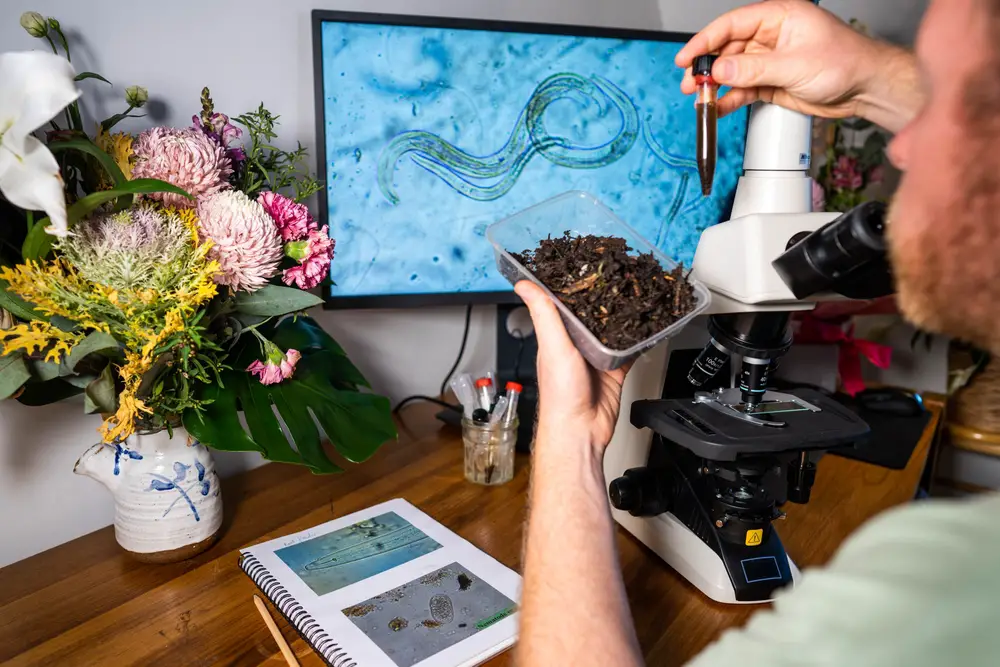If you’re struggling to keep your tomatoes or peppers on the vine due to the presence of these big, green voracious tomato hornworm caterpillars, you might just be wondering “where do tomato hornworms come from?”
This common pest is the larval stage of manduca quinquemaculata, the five spotted hawk moth. Tomato hornworm comes from eggs laid individually by the female five spotted hawk moth on host plants in late spring – just in time to feast on your hard work in the garden.
If you have been run ragged by this pest and looking for strategies to rid yourself of tomato hornworms, this article covers everything you need to know about the tomato hornworm and how you can control and get rid of them in your garden!
Just What Exactly Are These Tomato Hornworms?
Tomato hornworms are the larvae of the five spotted hawk moth, a moth that is common in both North America and Australia.

They are relatives of the tobacco hornworm that dominates the southern US states.
Here are facts about tomato hornworms:
- They hatch from solitary eggs that are laid by mature female moths on the plants that will become both a home and a meal for the newly hatched and very hungry caterpillars.
- The eggs are laid on the underside of the leaves of a host plant and incubate for 7 days.
- The m. quinquemaculata larvae grow to become large bright green caterpillars with a large dark coloured “horn” on their behind that gives them their name. They can exceed 10cm (3.9 inches) in length.
- Along their body, they have white V-shaped markings (around 7 to 8) with blue-black spiny projections along their sides.
- Tomato hornworms will persist in the larval stage, feeding vigorously for up to six weeks before burrowing into the earth and creating a cocoon.
Plus, they are capable of overwintering in their pupal state but can emerge as mature moths as quickly as 3 weeks after burying themselves.
Moths emerge in the spring, ready to mate and lay eggs once more. Given the vibrancy of the green pupae, the brown-grey moths appear rather drab.
If You Don’t Recognise the Tomato Hornworm, You’ll Definitely Recognise Its Handiwork
Gardeners who have but their heart in raising a decent crop will be familiar with the disappointment that comes with finding chewed leaves and fruits.
Because the tomato hornworm is green it is not necessarily easy to spot.
Signs of tomato hornworm activity include:
- Chewed leaves
- Missing leaves
- Wilted leaves
- Large holes in leaves
- Extensive defoliation
- The tops of plants eaten away
- Whole flowers eaten
- Scarred fruits
- Dark green/black droppings
- Sun damaged fruits due to loss of leaf cover
- White cocoons of the 5 spotted hawk moth
Tomatoes Aren’t the Only Target of the Tomato Hornworm
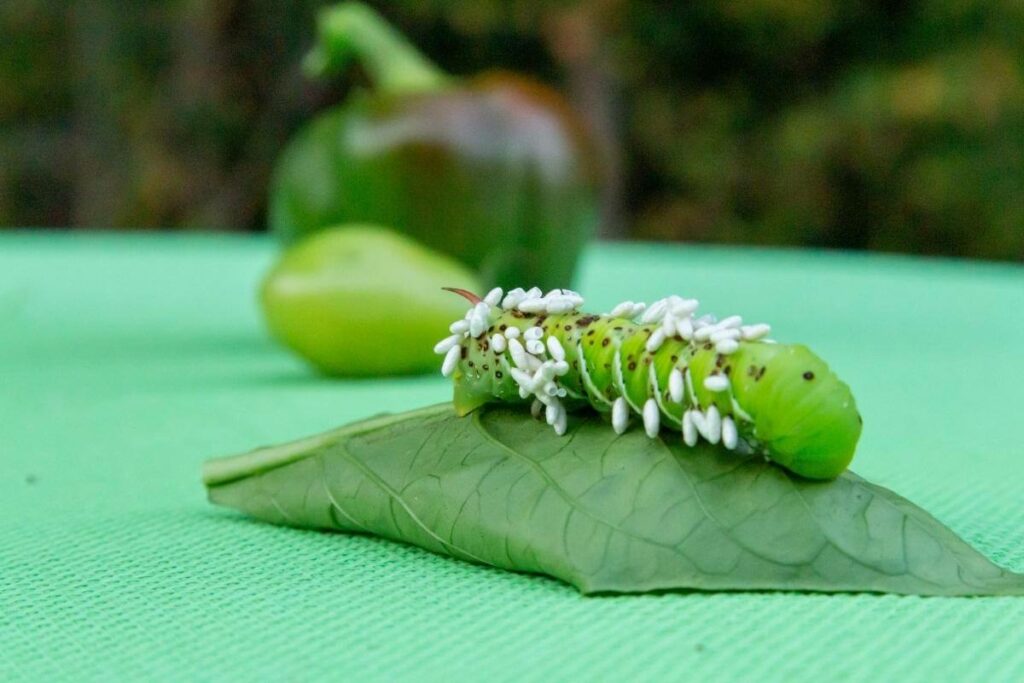
The tomato hornworm is named after the tomato plant that is usually its host.
The five-spotted hawk moth will lay its eggs under tomato leaves.
They also will target other relatives of the tomato, which is part of the nightshade (Solanaceae) family.
These plants include:
- Bell peppers
- Tomatillos
- Hot peppers
- Eggplants
- Potatoes
- Watermelons
- Blueberries
- Physalis
- Goji berries
Do Tomato Hornworms Bite or Sting?
Unlike many species of caterpillar, the tomato hornworm caterpillar is not poisonous and is safe to handle.
Its horns are not sharp and it cannot bite or sting, so you can pick them right off the plant you find it on.
Control and Prevention of Tomato Hornworms
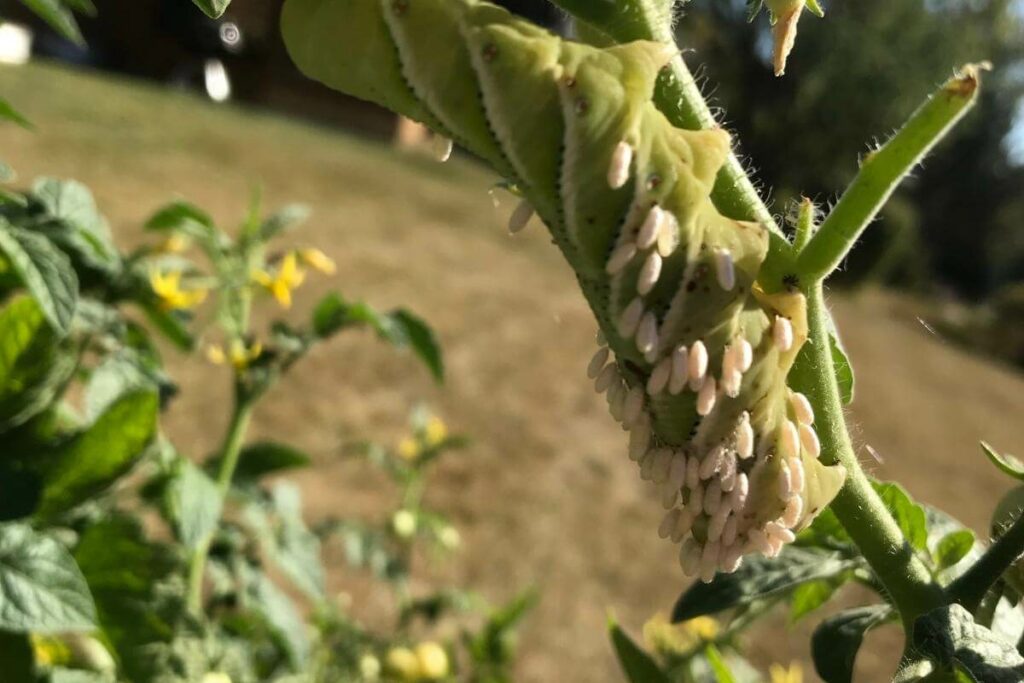
Because the tomato hornworm is such a determined feeder, it is best to tackle these pests as soon as you encounter them if you want to have any hope of saving your vegetable garden harvest.
Here are some strategies for getting rid of these pesky caterpillars:
- Pick them off the plants and throw them into a bucket of soapy water. Tomato hornworm caterpillars can also be composted as they will quickly die after being parted from their host plant.
- If you have backyard chickens or ducks, you can let them loose on these caterpillars as a tasty treat. Chickens will fight over these caterpillars so if you don’t want them tearing up your plants, handpick the caterpillars and feed them to your poultry for enriched eggs.
- Encourage natural predators of the tomato hornworm caterpillar. Predators of these caterpillars can be as prolific as the pests themselves, getting their numbers down so you don’t have to. Key predators of the tomato hornworm caterpillar include ladybirds, lacewings, common wasps, and parasitic wasps.
- Insecticidal soaps can be used to kill hornworms. You can mix this soap with garlic and cayenne pepper to make a potent spray that will deter the caterpillar from eating your tomato plant leaves.
- Pesticides should never be the first strategy for tackling these caterpillars. But if you must use a pesticide, a targeted approach works best. You will have to spray the leaves that the tomato hornworm caterpillar is going to eat so that the poison is ingested by the caterpillar. An effective organic biological pesticide is Bacillus thuringiensis (Bt) which is a bacteria that is poisonous to many caterpillar species. It is simply sprayed onto the plants, with reapplication after rainfall.
Great Strategies for Keeping Your Tomatoes to Yourself
Without a long term preventative strategy, you will simply find yourself fight the tomato hornworm caterpillar year after year.
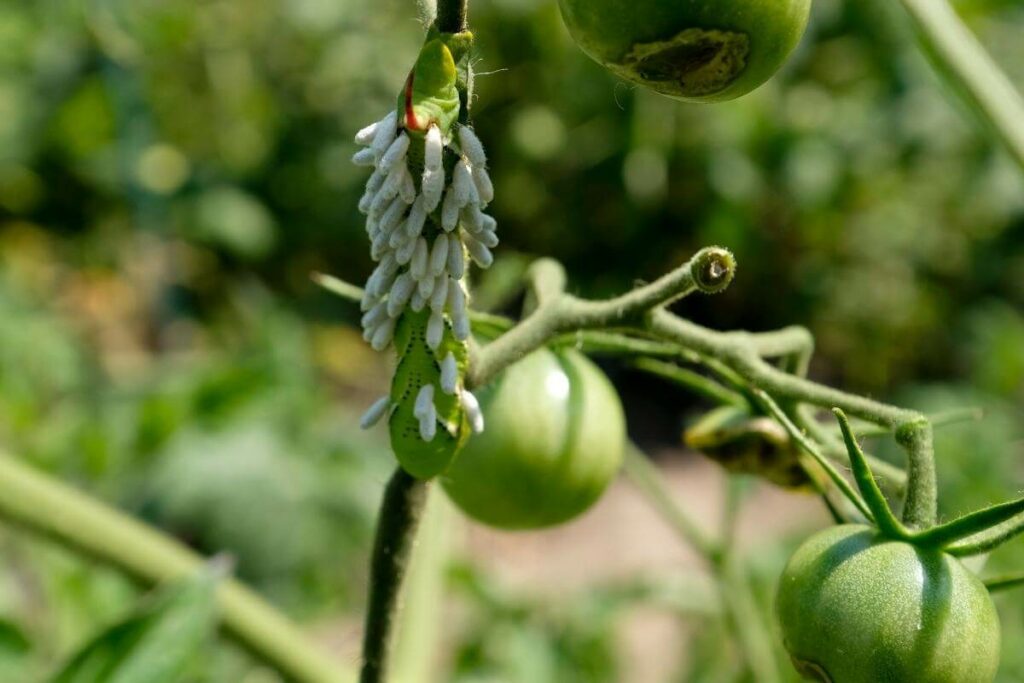
By making some changes to how you garden, you can keep infestations with this persistent green pest at bay.
Here are three things to try:
- Biodiversity: Making your garden an inviting place for a variety of insects and wildlife will mean that natural predators like birds and wasps will eat tomato hornworm caterpillars before they can do significant damage. Planting wildflowers or creating bug hotels are two easy methods of boosting the biological control you already had.
- Tillage: Tilling and cultivating your soil will destroy the overwintering pupae that will become next years generation of moths. You will quite literally be destroying the tomato hornworm where it comes from. Thorough tillage before and after your gardening season leaves the moths with no place to hide.
- Companion plants: Companion planting is a strategy that has been used by horticulturists to deter pests for millennia. Basil, tagetes, marigolds and dill can be effective deterrents.
Tomato Hornworms Don’t Need to Herald the Demise of Your Vegetable Patch
Thankfully you can arm yourself with a variety of approaches to stop tomato hornworm caterpillars from decimating your plants.
As with many aspects of gardening, persistence is key, with reapplication of sprays and treatments or persistent bi-annual tillage soon providing your tomato crop with the relief it needs.
